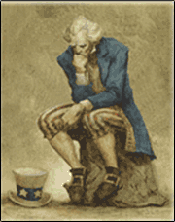
(function(d, s, id) { var js, fjs = d.getElementsByTagName(s)[0]; if (d.getElementById(id)) return; js = d.createElement(s); js.id = id; js.src = “https://connect.facebook.net/en_US/sdk.js#xfbml=1&version=v3.0”; fjs.parentNode.insertBefore(js, fjs); }(document, ‘script’, ‘facebook-jssdk’)); –>
–>
September 5, 2023
In a recent Wall Street Journal column, William Galston accuses Governor Ron DeSantis of perpetrating “indoctrination” in Florida’s state universities through the “Stop the Woke Act.” The part of the act that offends Mr. Galston and which he mistakenly characterizes as “indoctrination” is that prohibiting the actual indoctrination of students and employees in Critical Race Theory.
‘); googletag.cmd.push(function () { googletag.display(‘div-gpt-ad-1609268089992-0’); }); document.write(”); googletag.cmd.push(function() { googletag.pubads().addEventListener(‘slotRenderEnded’, function(event) { if (event.slot.getSlotElementId() == “div-hre-Americanthinker—New-3028”) { googletag.display(“div-hre-Americanthinker—New-3028”); } }); }); }
The legislative language at issue presumably is that in Section 2(4)(a) of the Act: “It shall constitute discrimination on the basis of race, color, national origin, or sex under this section to subject any student or employee to training or instruction that espouses, promotes, advances, inculcates, or compels such student or employee to believe any of the following concepts[.]”
There ensue eight “concepts:” the imputation of “oppressed” or “oppressor” status by virtue of one’s race and/or sex, the imperative to treat others with greater or lesser respect because of their race and/or sex, the imperative to blame people based upon their race and/or sex for the past actions of others of similar race and/or sex, the imperative to discriminate against people because of their race and/or sex, the imperative that people by virtue of their race and/or sex bear personal responsibility and should feel guilt because of actions committed by others of the same race and/or sex in the past, and the conclusion that “merit, excellence, hard work, fairness, neutrality, objectivity, and racial colorblindness” are racist or sexist notions and instruments of oppression.
It must be added, particularly since Galston leaves it out, that the next sub-section, (2(4)(b), says: “Paragraph (a) may not be construed to prohibit discussion of the concepts listed therein as part of a larger course of training or instruction, provided such training or instruction is given in an objective manner without endorsement of the concepts.”
‘); googletag.cmd.push(function () { googletag.display(‘div-gpt-ad-1609270365559-0’); }); document.write(”); googletag.cmd.push(function() { googletag.pubads().addEventListener(‘slotRenderEnded’, function(event) { if (event.slot.getSlotElementId() == “div-hre-Americanthinker—New-3035”) { googletag.display(“div-hre-Americanthinker—New-3035”); } }); }); }
The Act, therefore, does not bar discussion of anything. It plainly is intended to protect students and teachers from the proselytization and harangue for which purveyors of Critical Race Theory in universities are known. Beyond this, if Galston thinks that a university professor has a First Amendment right to preach the iniquity of the White race to his class, then does he have a comparable right to expound upon other races in the same vein? Or is that a point of logic that you refute by invoking the historical context?
Galston, who does not appear to have studied the law, blithely dismisses the arguments made on behalf of the Act in the court actions brought against it. The First Amendment argument put forth by the State of Florida is based upon a line of cases that distinguish between speech that is effectively the university’s and that which is solely the speaker’s. In Rosenberger v. Rector and Visitors of Univ. of Va., 515 U.S. 819, 833 (1995), the Supreme Court observes, “When the University determines the content of the education it provides, it is the University speaking, and we have permitted the government to regulate the content of what is or is not expressed when it is the speaker or when it enlists private entities to convey its own message.” Obviously, the university can require that a professor hired to teach English literature not decide to teach chemistry to his class instead. It also clearly can bar the preaching of racial vituperation to students in a classroom. And what is Critical Race Theory but that?
Galston invokes the People’s Republic of China, suggesting that application of doctrines such as that in the Rosenberger opinion render our universities comparable to theirs in subservience to the state. Such observations betray a certain detachment from reality.
To reiterate, the Act does not prohibit discussion of Critical Race Theory, only its promulgation as established truth to an audience of students, a captive audience to the extent that the students have to take the class to graduate. On the other hand, the repression at American universities of conservative viewpoints and Biblical morality, not expressed in the classroom but in articles, tweets, statements, and private conversations, is commonplace today. It includes firings, disciplinary actions, shaming, and ostracism.
And the denigration of an entire category of people that Critical Race Theory implies is quite congruent with the persecution of Moslems in the PRC.
Galston tells us that he was a student of Allan Bloom and Walter Berns and that he (Galston) “taught for three decades at two large universities.” It was thus that he learned the distinction between liberal education and indoctrination. Having studied with two of Mr. Bloom’s most distinguished students and taught as an adjunct professor for a little over a decade in second-rate universities throughout the State of New Jersey as well as at the New School in New York, I also value that distinction. I can only wonder what Galston learned from Allan Bloom or Walter Berns that makes him now side with the hucksters of Critical Race Theory. What exactly do they have to do with liberal education or free inquiry?
‘); googletag.cmd.push(function () { googletag.display(‘div-gpt-ad-1609268078422-0’); }); document.write(”); googletag.cmd.push(function() { googletag.pubads().addEventListener(‘slotRenderEnded’, function(event) { if (event.slot.getSlotElementId() == “div-hre-Americanthinker—New-3027”) { googletag.display(“div-hre-Americanthinker—New-3027”); } }); }); } if (publir_show_ads) { document.write(“
The piece concludes with quotations from three advisers to Governor Ron DeSantis, which are presented without citation. The statements that “the goal of the university is not free inquiry” and that “education is at heart a political question,” are attributed to the City Journal’s Christopher Rufo. Does Galston actually object to the second statement?
Readers of Plato’s Republic and Aristotle’s Politics know that no political question is more vital than education. “That the legislator must, therefore, make the education of the young his object above all would be disputed by no one,” says Aristotle at the beginning of Book 8 of the latter work. And Plato’s most famous book on politics is also “the book on education,” according to Alan Bloom in The Closing of the American Mind.
A nation is made, continually remade, and potentially altered by the education of the young. The Left has long known this, which is why it wants education at all levels in its clutches.
I frankly do not know where Galston found the other statement attributed to Rufo (“[T]he goal of the university is not free inquiry”). In Rufo’s recent column in the New York Times, he observes, “The university was conceived as a home for a community of scholars who pursued a variety of disciplines, but were united in a shared commitment to inquiry, research and debate, all directed toward the pursuit of the highest good, rather than the immediate interests of partisan politics.” He adds that today many universities have “abandoned that mission and replaced it with the pursuit of diversity, equity and inclusion.”
From which direction does the challenge to liberal education come today? Galston claims to be for such education but seems oblivious to what actually threatens it and maligns those seeking to preserve it.

Image: Office of Gov. Ron DeSantis
<!–
–>
<!– if(page_width_onload <= 479) { document.write("
“); googletag.cmd.push(function() { googletag.display(‘div-gpt-ad-1345489840937-4’); }); } –> If you experience technical problems, please write to [email protected]
FOLLOW US ON
<!–
–>
<!– _qoptions={ qacct:”p-9bKF-NgTuSFM6″ }; ![]() –> <!—-> <!– var addthis_share = { email_template: “new_template” } –>
–> <!—-> <!– var addthis_share = { email_template: “new_template” } –>







